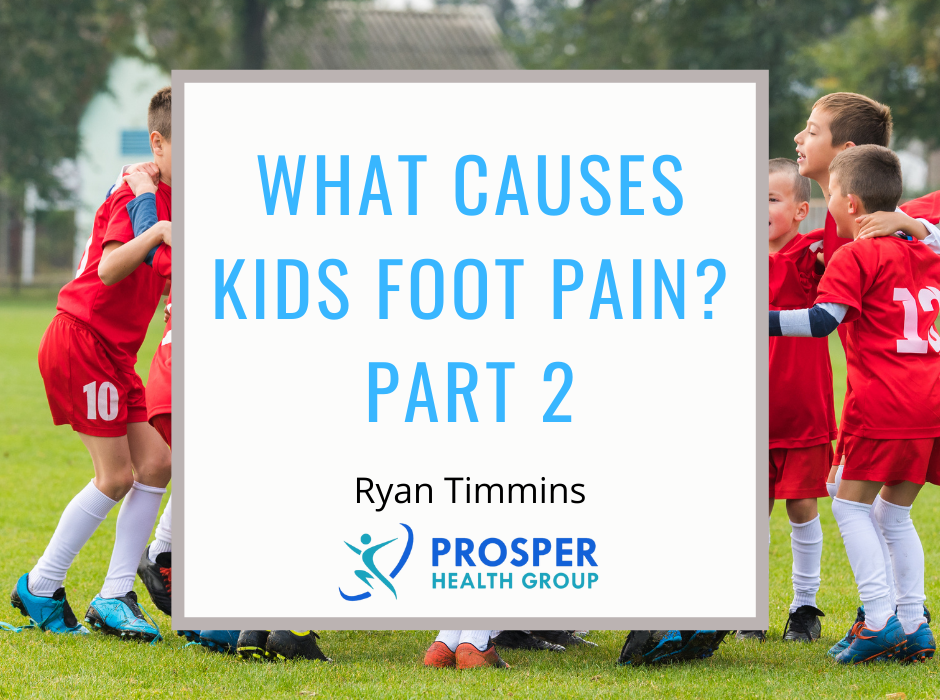Our resident Highton Podiatrist, Ryan Timmins, is back to explore some of the more common conditions that bring young families into our Highton and Colac Podiatry Clinics.
What are the more common foot injuries we see in kids?
Shin Splints
Commonly referred to as Medial Tibial Stress Syndrome, Shin Splints is one of the more common injuries we treat as Podiatrists. Symptoms of pain and aching are typically experienced along the inside of the shin bone during and/or after exercise. Put simply, Shin Splints is an overuse injury where bone at the inside of the tibia is broken down faster than it can repair itself. The micro-trauma seen at the inside of the shin bone is a result of ongoing strain from muscles pulling on the tibia bone and loading during high impact activities.
Calcaneal Apophysitis
Also known as Sever’s Disease, Calcaneal Apophysitis is typically seen in kids aged between 9-15 years. Pain is reported at the bottom of the heel, and is made worse with running and jumping activities. Periods of symptomatic pain are usually made better with rest and ice. The cause of Calcaneal Apophysitis is due to the achilles tendon (that runs down the back of the leg and inserts in the heel bone) pulling on a growth plate at the back of the heel that has not fully developed. This growth plate typically fully develops by the age of 15-16 where symptoms will cease.
Ingrown Toenails
Ingrown toenails are hard to miss and are very common in kids & adolescence. The combination of poor foot hygiene, tight shoes (usually worn for sport), the kicking of balls, sweaty socks and poor nail cutting technique create the ‘perfect storm’ for ingrown toenails to occur. In our practice we typically see kids present with an accompanying infection at their ingrown toenail site, as they will often avoid seeking treatment. More often than not there will be an offending nail spike that needs removing from the side of the nail to resolve the ingrown toenail.
Flat Feet
Flat feet is a presentation we encounter a lot in our clinic rooms. Some children present with pain as a result of their flat feet, others present asymptomatic. Having flat feet is not always a bad thing, however cases should always be seen to by a clinician to ensure the most appropriate course of action. There are many reasons why a child might have flat feet, and in some cases the persistence of flat feet into older years may result in other foot/leg injuries. Some Children may require orthotics or specific shoe recommendations to improve function and reduce painful symptoms. Others may require no treatment at all.
Toe Walking
Many toddlers show signs of toe walking, and more often than not this habit disappears by the age of 3-4. Persistence of toe talking past these ages can sometimes be a sign of other medical conditions and should always be seen to by a clinician. A Podiatrist can refer on if necessary for further testing.
Knock-Knees & Bow-Legs
Knock-Knees (where a child’s knees are touching or meet) and Bow-Legs (where a child’s knees have a substantial gap between them) are also common presentations we see in our clinic rooms. Babies younger than 18 months will normally have Bow-Legs, and children between the ages of 2-7 will commonly have Knock-Knees. Presentation of these two signs outside of these age ranges can be a sign of other medical conditions as should always be seen to by a clinician.
Bunions
Usually associated with older adults, kids and adolescents can also develop bunions.
Known as Juvenile Bunions, they are usually secondary to a hypermobile & excessively flat feet. When a bunion develops, the inside of the big toe joint becomes very pronounced, often with early arthritic changes and can develop painful symptoms.
Osteochondroses
The term Osteochondroses refers to a group of diseases that affects the growing skeleton. These disorders result from abnormal growth, injury, or overuse of the developing growth plate and surrounding ossification centers. These conditions can sometimes result in long term side effects should they not be recognised or treated early.
What to do from here
To book an appointment to have your child’s foot and lower limb assessed and treated by one of our expert Highton Podiatrists call us on 5290 5238.
Ryan Timmins
Podiatrist
Prosper Health Group
